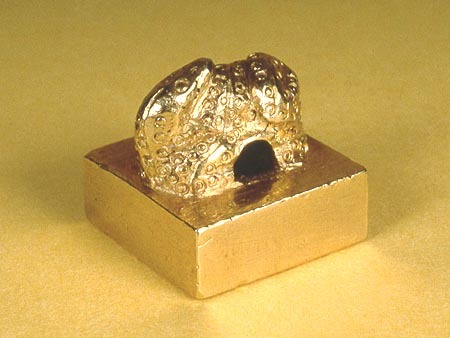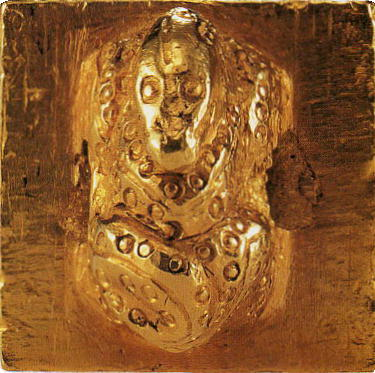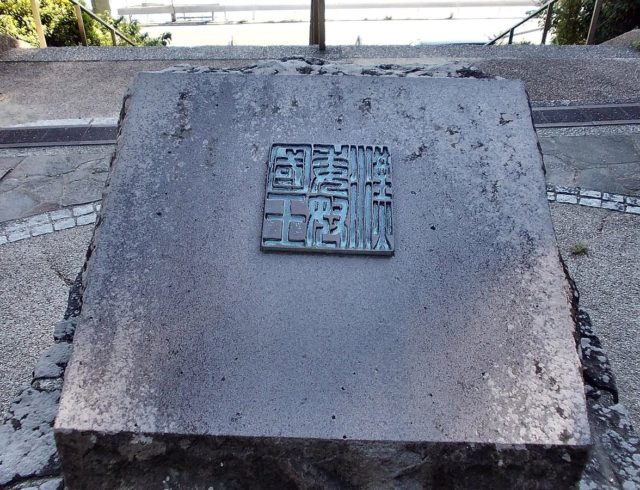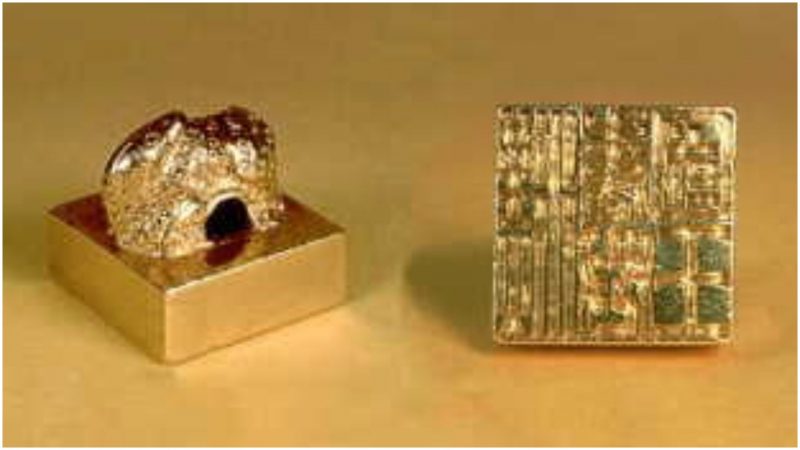The idea of a national treasure originated about the same time as a national anthem. Both are typical of the sort of romantic nationalism of the late 18th century and 19th century.
Since those days, many countries created lists of their national treasures. Now thousands of such cherished items can be seen around the world. While some items or artifacts are considered a shared cultural asset, others may carry exceptional monetary value. Frequently, such items are rare cultural artifacts, and one story about such an artifact, and how it was found, brings us to Japan.
The Far Eastern country has some 46 items or sets of items in its possession, many of which originated in ancient or feudal-Japanese periods. They are kept in various temples, shrines, universities, or museums, and one very special item of the 46 can be seen as part of the collection of the Fukuoka City Museum in Fukuoka. It is the King of Na gold seal.

As the story goes, this solid gold seal was discovered in 1784 on Shikanoshima Island in the Fukuoka Prefecture. It is thought that the seal was cast in China, after which it was delivered to Japan as an honorable gift by the Emperor Guangwu of Han while conducting a diplomatic visit to the island country in 57 AD.
Five Chinese characters are embedded in the unique seal, and studying them has helped historians identify the seal as belonging to the King of the Na, ruling the state of the Wa, which was a vassal state of the Han Dynasty in Japan. As ancient Chinese chronicles suggest, the seal followed a pattern used with Chinese jade seals. However, what really makes it so special is that it is made of gold.
That same year, the King of the Na had sent envoys to the capital of China to return the honorable deed by offering tribute and formal greetings for the New Year. The vassal state, which had thrived in the Fukuoka district, ceased to exist at some point during the 3rd century AD, and the seal was quickly lost and forgotten. It was rediscovered some 1,500 years later, which makes for one of the most striking episodes in the entire story.

It would be an Edo-period farmer named Jinbei who discovered the invaluable item on April 12, 1784, while attempting to repair an irrigation ditch on Shikanoshima Island. Reportedly, the seal was found surrounded by stones arranged in a box-like structure. The stone above the seal, being quite heavy, required two adults to lift it.
![Seal face of the King of Na gold seal. Inscribed with King of Na, Vassal of Han [Dynasty] in mirrored Chinese characters (漢委奴國王).](https://www.thevintagenews.com/wp-content/uploads/sites/65/2017/08/king_of_na_gold_seal_face.png)
The discovery of the golden seal was of great importance because it helped acknowledge and verify the very existence of Nankoku, the vassal state, which had previously been known only from ancient chronicles. Engraved upon the seal can be read the Chinese characters 漢委奴國王(Kan no Wa no Na-no-Koku-ō), which translates to “seal of the King of the Na state of the Wa of the Han Dynasty.”
As soon as it was rediscovered, the seal was kept by the Kuroda clan, who held authority and power over the Fukuoka district. Eventually, the family donated the seal to Fukuoka city in 1978.

The gold of the seal is of a remarkable 95 percent purity. It is made up of a square base, showing the seal itself on the bottom side. The ancient design also features a handle on the top of the base, resembling the shape of a coiled serpent, and it weights 3.85 ounces. Base to handle, the seal does not extend more than an inch, but the dimensions do correspond to the traditional Chinese standard unit of length, typical for the Later Han Dynasty.
The area on Shikanoshima Island where the Gold Seal of the King of Na was found was later developed into a park to commemorate the discovery, the park given the name Kin-in Park. The island itself is no more than seven miles around but is connected to the Japanese mainland by a road.
